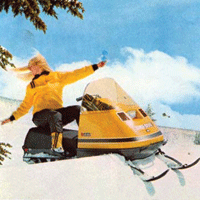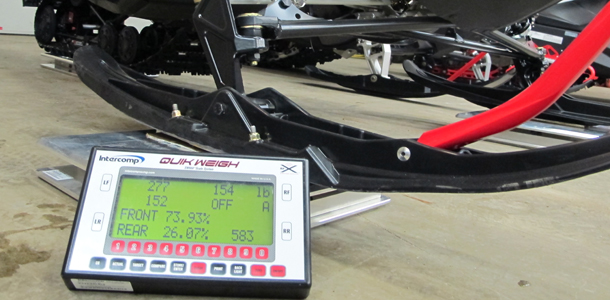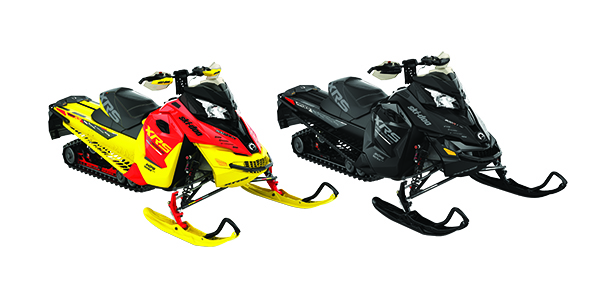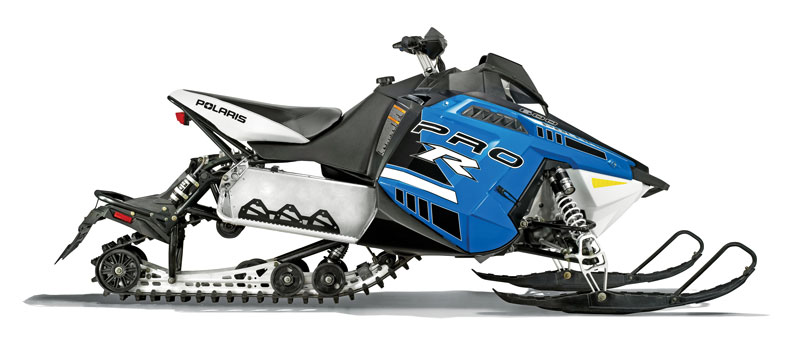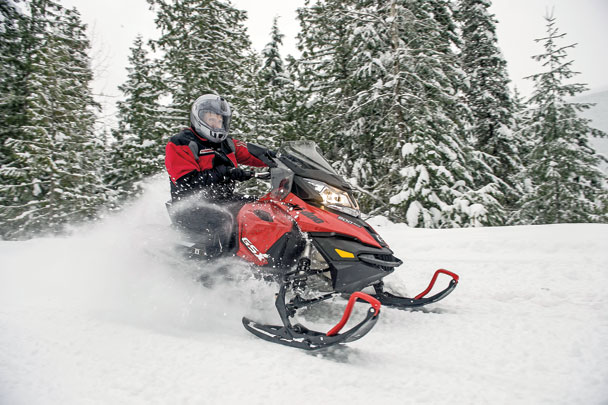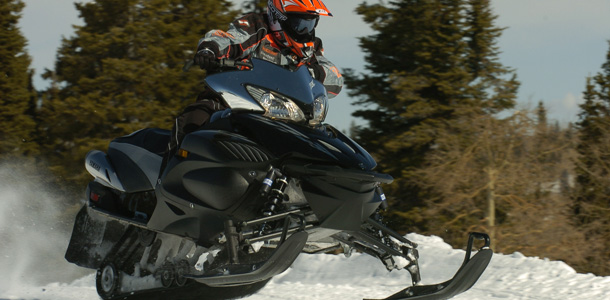It’s funny how one year can change things. In our 600 comparison last year, we wrote, “For its easy, predictable handling, the MX Z Adrenaline gets top honors.”
Now, one year later, the Ski-Doo MX Z feels twitchy. Once the best thing going has been beat, it’s surprising how quickly our testers were able to find fault, even if only minor.
The handling is still crisp and the machine holds its lines well — but that twitch means it’s just not as confident and reassuring as the Polaris. The Ski-Doo MX Z takes second in the handling category.
The IQ has very predictable, flat handling. And it stays flat even when hitting bumps sideways while countersteering. It’s an extreme case, but the ability for this machine to keep its skis on the ground in about every cornering situation — smooth or rough — for the best handling can’t be compared any easier.
In one section of our test route, a hilly section of twisty trail was roughed up after a weekend of heavy traffic. Our three test drivers rode the stretch repeatedly, with each machine to identify the handling leader.
The Polaris IQ was the most predictable, responded the best to the bumps and held its line better than the other machines. Mid-corner bumps did nothing to upset the IQ chassis. Its front suspension ignores bump steer. With the ’07 upgrades, the IQ front end is better than ever because cornering is easier with the lighter steering.
The MX Z would be tied if we conducted the same set of repetitive drills on a smooth trail, but it doesn’t perform as well in the bumps. The REV is still the chassis to have for those who want an active, involved ride. To keep the machine sharp and avoiding the corner push, riders need to hang off the MX Z more than on the Polaris.
Our suspension changes to the MX Z helped tune the ride better for this test, too. In addition to the front suspension preloads getting bumped up, we also stiffened the skid’s front spring position to the second setting and the rear torsion springs were set to medium. For our riding and the conditions, the handling sharpened. We had more feedback from both the suspension and the steering feedback. We weren’t aiming to eliminate any corner push, just an overall front-end feel. We settled some of the twitchy feel we had before, too.
The Nytro is an active ride, too. One tester commented that the Nytro is a difficult sled to feel comfortable on in just a few miles. It requires a driver’s attention to keep the front end flat. Going from one of the other machines in this test to the Nytro will have the driver thinking the machine isn’t stable.
Because the Nytro feels less stable than the others, it takes some getting used to before driving it in a way that will keep up with the other machines in this test. When driving machines hard, it’s a sled that will get operators in trouble before the others.
Early on our testing route we wanted to remove some of the tippy feel of the Nytro by changing the setup. We reduced the air pressure in the Fox FLOAT front shocks from 70 psi to 55 psi. It let the front end sit into the shocks for a lower ride height, more compliant suspension and a setting that still resisted bottoming. It was also a better pressure to combat stiction, the force that’s required to initiate shock travel. The tradeoff was a heavier steering effort, but we gladly traded it for a more stable ride up front.
It was this hilly, twisty and rough section of trail that revealed the Nytro is outclassed when pushed. While the front suspension works well, the rear suspension does not offer the ride quality this company is capable of building. Yamaha needs a better rear suspension that reacts well with the front end in bumps before it can truly be an aggressive, rough-trail sled.

